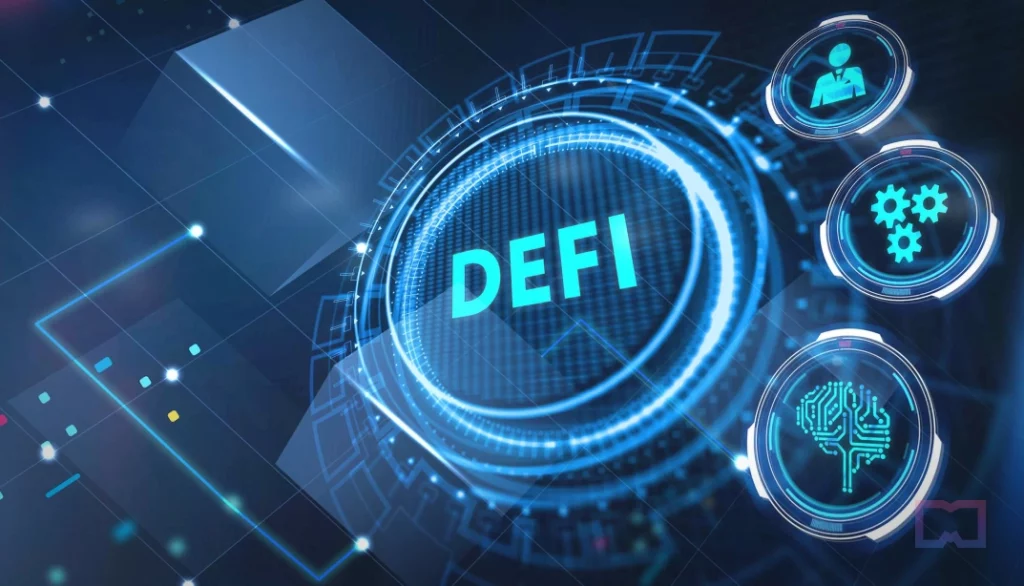We have seen how the central authorities of the centralized financial world have, in no small way, failed to bring genuine value to the fiat money model. This has planted in the minds of people, the yearning to grow above the power that holds sway in the fiat monetary system.
The birth of DeFi (a short form of Decentralized Finance), which is built on blockchain technology, and functions based on a smart contract, which doesn’t require the interference of a centralized authority, is aimed at delivering solutions where the traditional financial world has failed, and possibly throw the fiat money model overboard.
For clarity’s sake, the functionality of a smart contract comes alive in the form of a blockchain application, leveraging cryptographic encryption capabilities and inherent distribution ledger, to define the condition and terms under which every operation on the blockchain must obey.
How Does DeFi Staking Work?
Transactions in this space would have been threatened if not for the security measures in place to curb possible ills. And DeFi staking is one such measure. What then exactly is DeFi staking, and how does it work?
DeFi Staking is done when a user on a decentralized platform stakes their digital assets thereby making them transaction validators, and thereafter, they are incentivized with added assets to their crypto holdings.
This is done as a way to boost the security of the blockchain system and spur confidence among users. It is one of the most commonly discussed topics as it helps people to earn money without their full involvement in a trading process—a smart way to gain passive income, you can say.
This idea has gained massive recognition as it requires little or no technical skill; it features an almost zero percent complexity too. Staking DeFi, although exists on the decentralized system, is an entirely different bucket of fish from actual crypto trading.
While it’s true that this concept is geared towards trust promotion among users and has numerous advantages, it is also not without its downsides.
Disadvantages Of DeFi Staking
Being delighted by the concept of making smooth gains, almost without breaking a sweat, is no good enough reason to jump into the DeFi staking bandwagon—especially without a rich dose of its modus operandi.
Ideally, you’re abreast with some risk factors that lay ambush and lie in wait. This way, it becomes relatively easy to make the right move in the event that a negative possibility surfaces. Here are some of the disadvantages.
1. Possible malicious attack
Know that your wallet could be attacked upon stacking DeFi. It is a common occurrence. This is the reason users are advised to have a complete grasp of what they’re into before the process begins.
2. Loss to instability
Tokens are subject to fluctuation, and this, in turn, can lead to a high market risk. Here’s the thing, staking DeFi boosts liquidity. And as a liquidity provider, due to the highly volatile nature of the assets on the decentralized platform, you’re likely going to experience a negative shift in the value of your staked assets before the process is finalized.
3. Slashing
As a transaction validator, failing to do so at the ideal time owing to network problems or any other technical hindrance, can result in loss of assets. The problem is faced by both validators and delegators.
Note:
Although a platform like Binance almost eradicates these possibilities as it returns the same crypto amount that could have been lost to slashing. Also, it limits wallet attack possibility as it helps make the staking move in a way that makes a user’s wallet less accessible.
Advantages Of DeFi Staking
- DeFi staking offers you the chance of making a passive income as your crypto holding increases in the course of staking.
- Contributing to the increased efficiency and security of the blockchain network.
- You stand the chance of being given a governance token—with this, you can have a say on the future implementation of changes and decisions on the staked project.
How Is DeFi Staking Done?
DeFi staking is done in a few simple steps.
- Firstly, there are many DeFi staking facilities, choose one.
- Decide the number of digital assets you want to stage. Then make a deposit.
- A staking facility would always offer you the luxury of options of staking validator, decide on which to opt for.
- Upon the completion of every staking activity, you are then incentivized with added assets to the existing holdings of your digital assets
Conclusion
While it has been established that DeFi staking is an ideal way to earn passively, it’s important to understand its pros and cons to deliver a very strong dose of what truly is.



